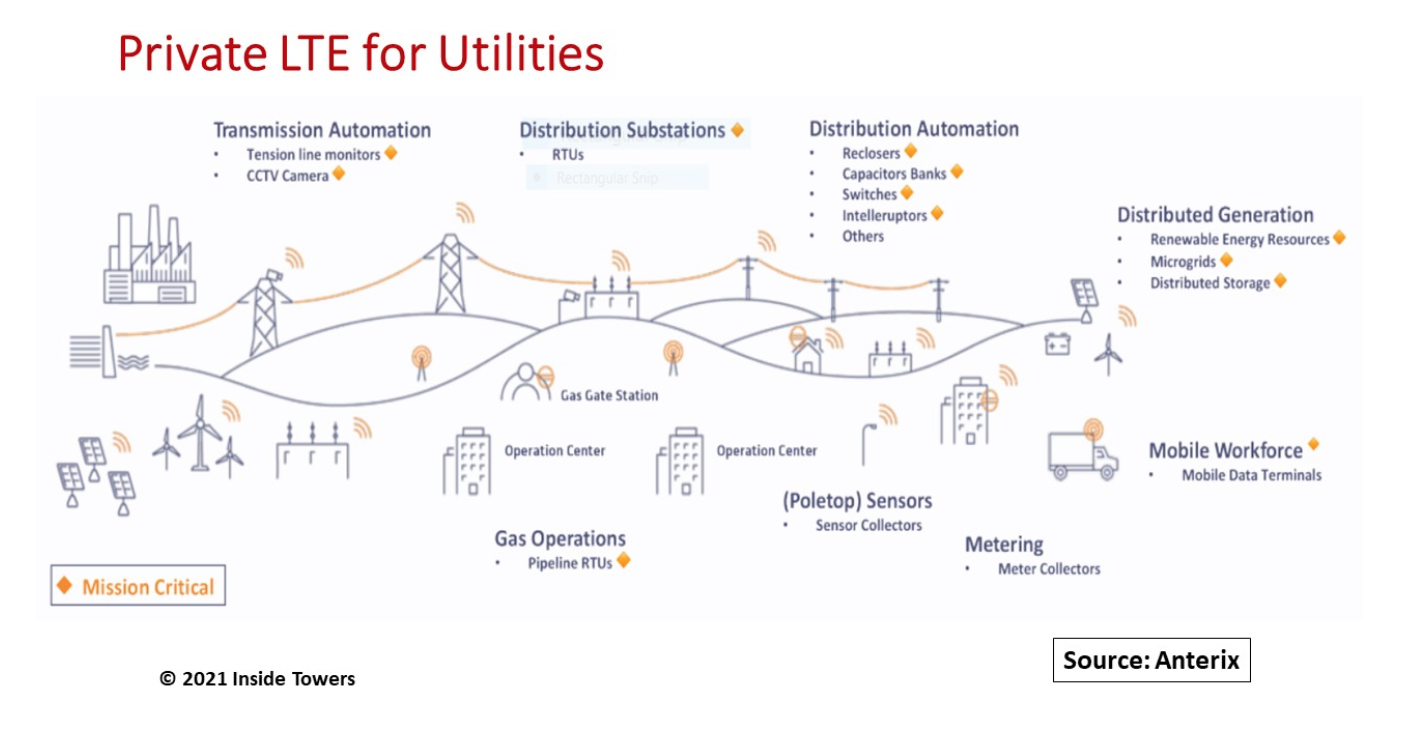Utilities are due for a digital makeover. The electrical grid must become more resilient and secure as utilities look for ways to lower operating costs and improve productivity.
A digital transformation involves several aspects. Utilities must modernize aged infrastructure and find ways to integrate and manage third-party solar and wind distributed energy resources. Digitalization means collecting and analyzing more data, both network operations and customer usage, efficiently in the cloud.
The grid must be resilient and hardened for cybersecurity and physical damage. A common communications system is needed to direct field forces in both normal and emergency conditions. Ultimately, digital transformation involves integrating utilities’ information technology with their operational technology.
Utilities use multiple wireless networks for different purposes. UHF/VHF land mobile radio is common for field communications. Unlicensed 900 MHz mesh networks collect smart meter data and 3.65 GHz is used to connect to remote terminal units at substations and in other SCADA applications.
The problem is that there is no common, standardized platform from which the utilities can manage their mission critical communications. Moreover, the Internet of Things is driving the need to monitor sensors at all levels of the grid producing higher data volumes than ever before.
Deploying a private LTE network using dedicated licensed spectrum is a solution.
4G LTE is a global 3GPP telecommunications standard with a robust ecosystem of RF equipment and devices. It is secure and can operate independently of the public cellular networks.
LTE supports high bandwidth, low latency applications and serves as a common platform for voice, data, and video communications across all operations for both human and IoT interaction. It enables interoperability with other private LTE networks and the public cellular networks.
More importantly, 4G LTE provides a migration path to 5G. A common communications platform helps utilities improve productivity at a lower total cost of ownership.
Getting access to licensed spectrum has been a challenge. The good news is that more licensed spectrum is available for private LTE applications.
Leasing carrier-owned 4G LTE spectrum such as 700 MHz in remote areas is an option.
Broadband Radio Service and Educational Broadband Service 2.5 GHz spectrum licenses averaging 22.5 MHz are available in 37 states. Some utilities are using 700 MHz Upper A band licenses offered in paired 2 MHz channels for specialized data communications.
In the FCC 3.5 GHz CBRS Auction, 10 utilities and electric cooperatives paid $174 million for 371 10 MHz priority access licenses. Southern California Edison and San Diego Gas & Electric together spent the most – $130 million for 24 PALs – in the heavily populated southern California market. Alabama Power won the most – 271 PALs for $19 million – to cover 103 counties in its operating region.
Anterix (NASDAQ: ATEX) is offering utilities its nationwide holdings of paired 6 MHz at 900 MHz licenses as the best solution for digitalization of the grid. 900 MHz enables wide area coverage with data throughput capacity and low latency to handle most wireless broadband communications.
Utilities like Ameren headquartered in St. Louis and Minneapolis-based Xcel Energy have already acquired Anterix’ 900 MHz licenses for their wireless broadband operations. Other large utilities are evaluating its use.
Anterix is promoting “networks of private networks” as a unifying and collaborative concept among electric, gas and water utilities across the country.
Network interworking approach enhances grid security and provides a compatible platform for data sharing and supporting out of region field maintenance crews who travel to assist with network restoration when disaster strikes.
By John Celentano, Inside Towers Business Editor





Reader Interactions